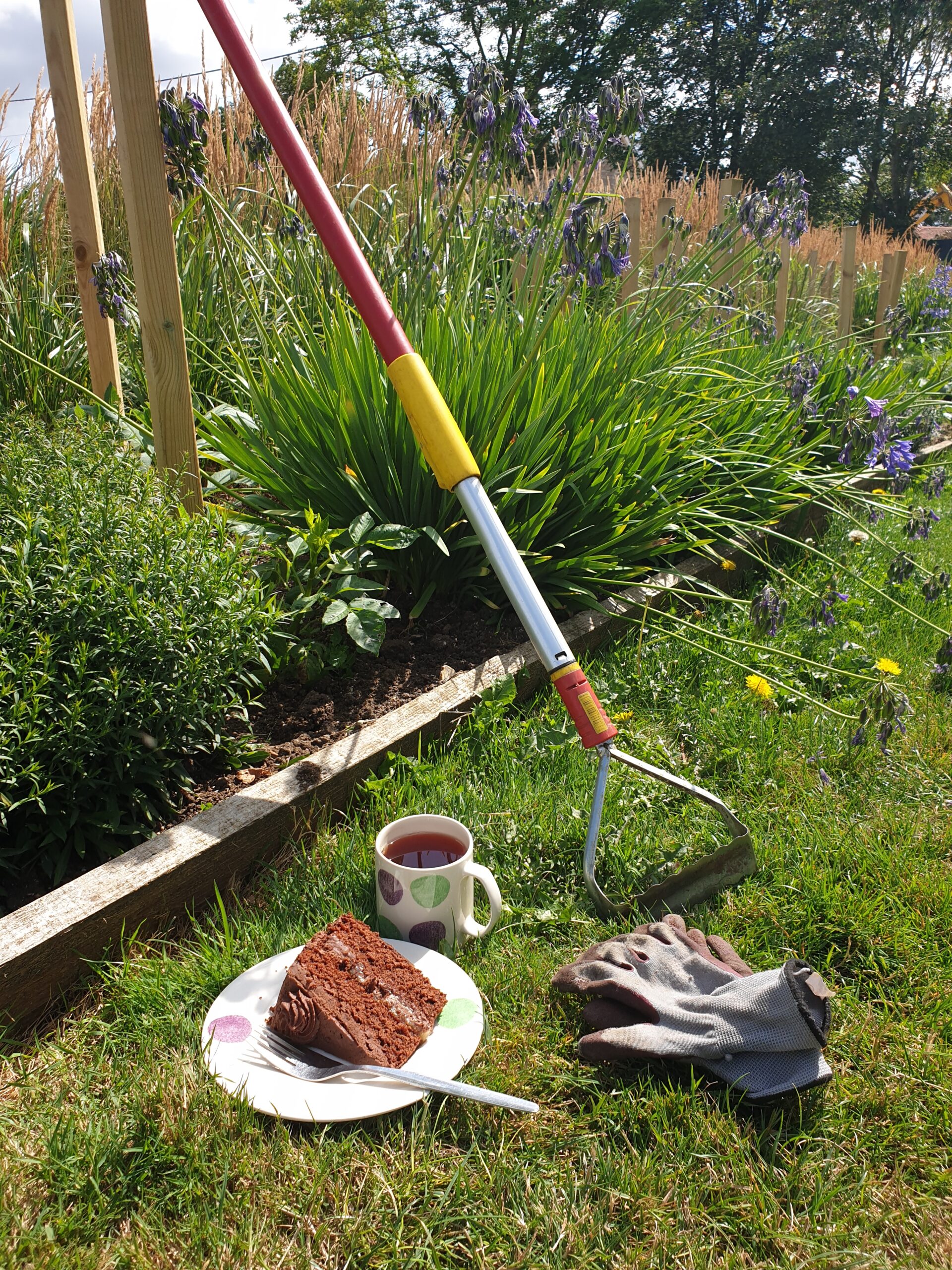May 2022
May 2022
Stephen says
The Bank is probably the major feature here at Aston Pottery and Gardens. Initially built in 2012, over the spoils from the construction of the shop and café, the Bank was extended beyond the car park in 2015. 140 tonnes of mushroom compost and 80 tonnes of lime-free grit were used to make the hill which now measures 100 metres long by 14 metres deep, and has an elevation of 3 metres. The vision was to create a hillside of hot colour with a dark purple beech hedge background and dark purple accents throughout, lasting from May through to the winter frosts. In 2020 the entire right hand side of the Bank was redesigned and replanted. The free draining conditions allow plants like Dahlias and Eucomis to thrive. Drought tolerant plants were also chosen such as Penstemon, Alstroemeria, Salvias, Fuschias, and Kniphofia, to reduce the amount of watering that would be required. In early summer the entire Bank is hoe-d every 2 weeks, taking 10 hours each time so plant spacing was considered to reduce the amount of hoeing needed to remove weeds.
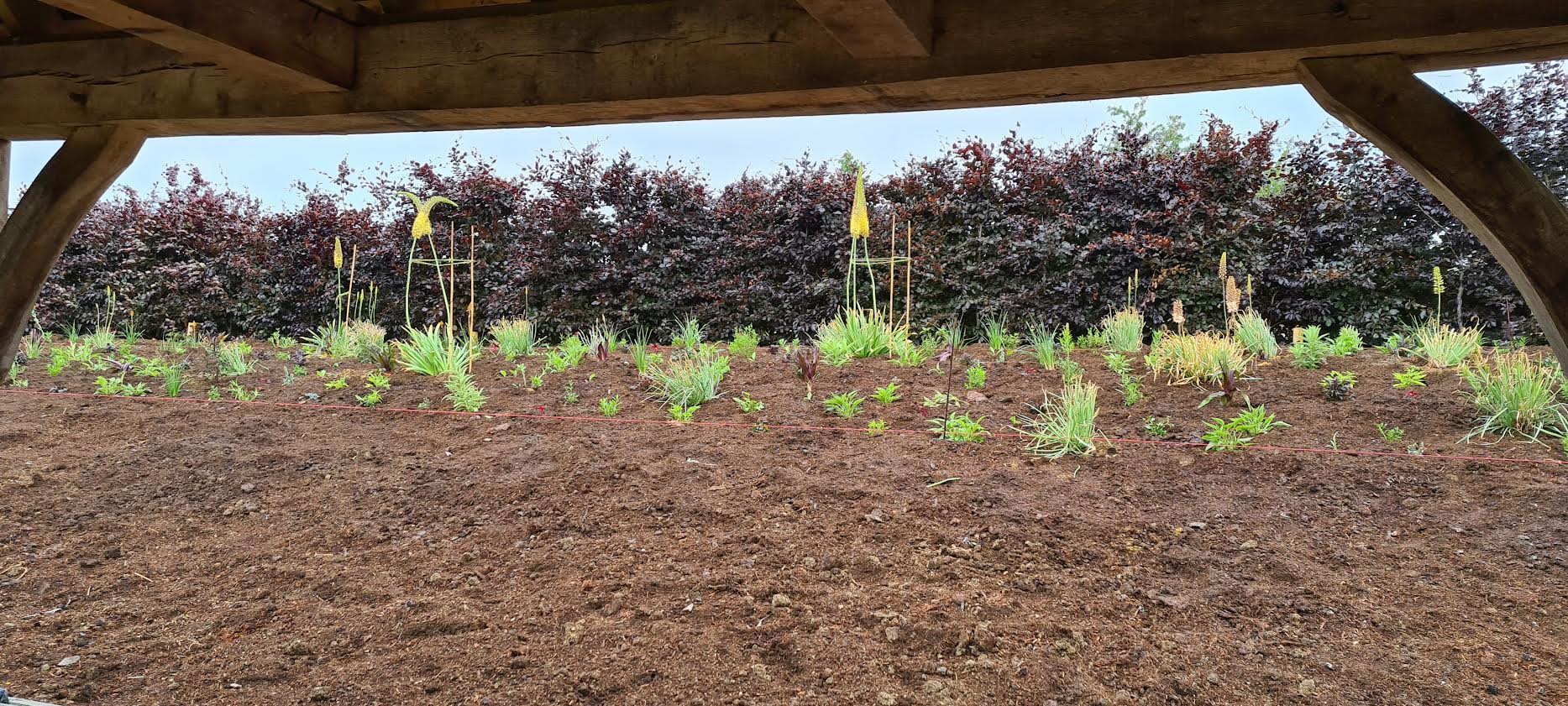

May is the beginning of the Bank bursting into life with 150 yellow and orange Eremurus lilies each throwing up between 3 and 8 6ft spires of tiny flowers. There is an understorey of Kniphofia Fiery Fred. Over 1000 yellow, orange and red verticals contrast against a backdrop of a hedge of purple beech and are quite stunning to see through May and June.
The purple tones of the beech hedge are carried through the planting on the Bank using 250 Eucomis Sparkling Burgundy and 200 Bishops series Dahlias. None of these are lifted over winter as the conditions on the Bank do not cause waterlogging so they do not rot off. Here again the plants selected were a considered choice to reduce workload.
4 varieties of Penstemon, 10 varieties of Salvia, Alstroemerias, and Fuschias are planted throughout the Bank and provide a tapestry of pink, purple, yellow and red flowers for 6 months starting in early June. These shrubby plants also fill the spaces between neighbouring plants, and so block out light and help to control weed growth.
Annual plants Calendula, Antirrhinum, Rudbeckia and Amaranthus Red Hot Hopi were added to the bank in 2020 and have been left to self seed. Careful hoeing controls where these annuals are allowed to grow.
In late summer Rudbeckia, Echinacea, Salvias, Penstemons and the rarest plant in the garden Lobelia Tupa take over from the early summer flowers. Lobelia Tupa originates from Chile and is a very difficult plant to propagate. We have around 30 of these majestic plants that put on a show of spires of reddish pink flowers towering above large silvery leaves. When the Bank was replanted in 2020, Lobelia Tupa were the first to go on the planting plan and the rest of the design was formed around them.
The Bank has possibly the most unusual combination of plants in the UK due to the growing conditions allowing us to put together plants that would not normally survive in the same places.
I highly recommend that you come and see it throughout the summer as it changes monthly. The best place to view it from is the far end of the mown field, looking back toward the Summer House.
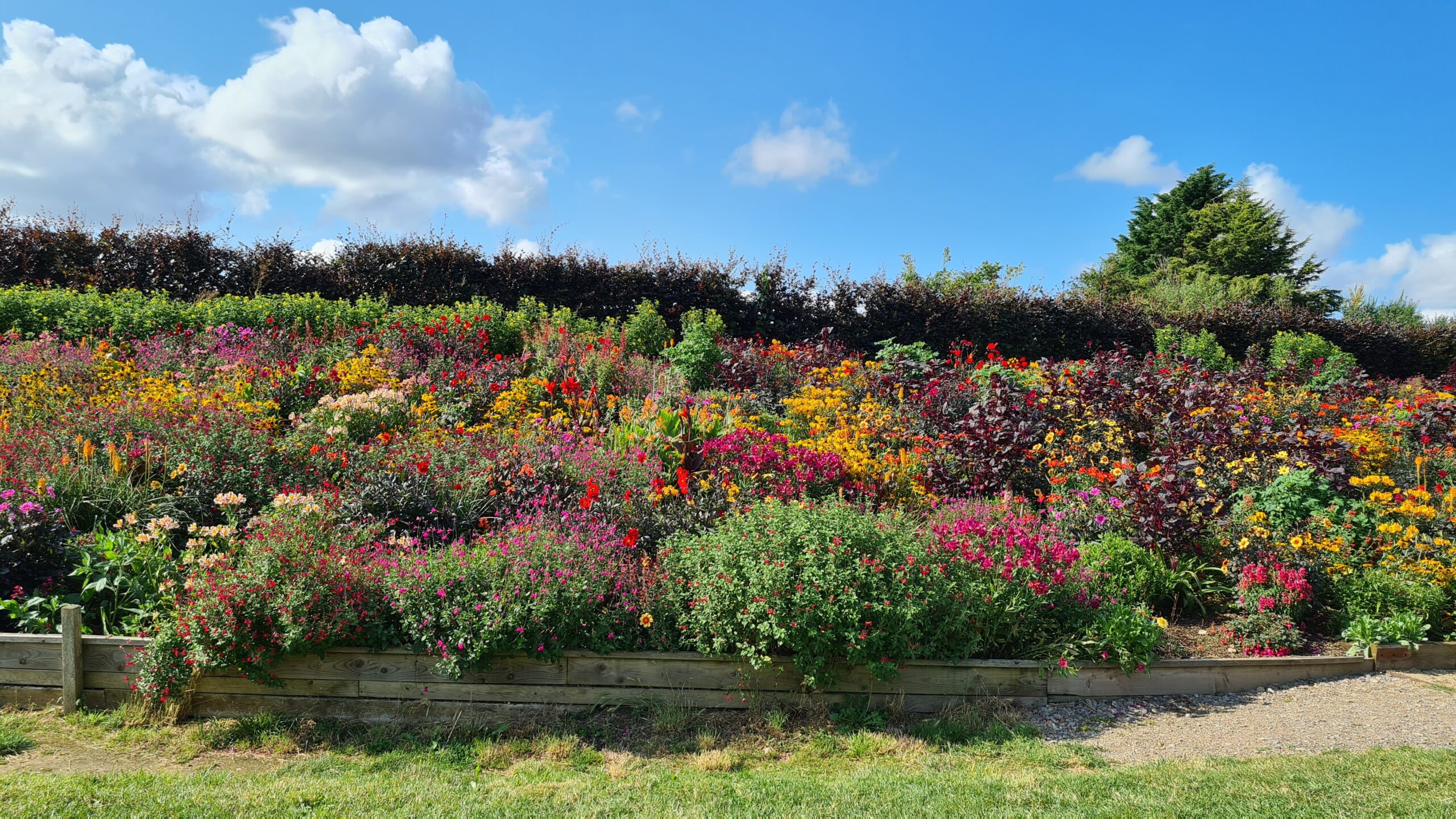
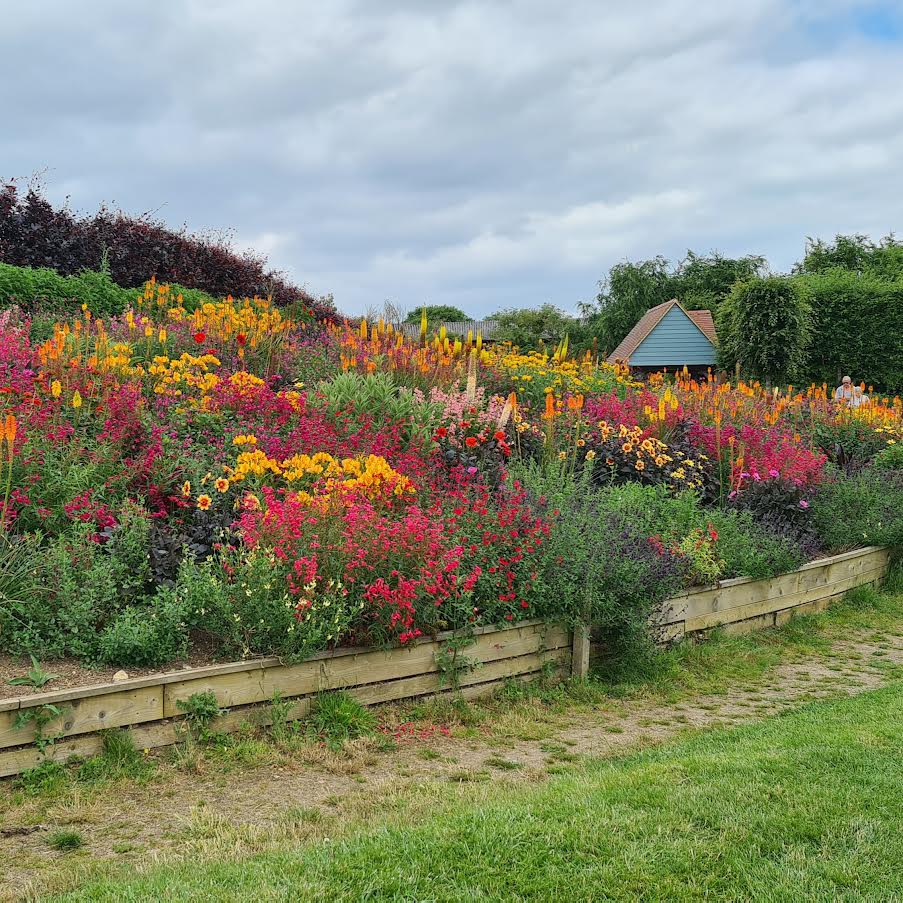

Behind the Scenes
The pots of Eucomis Sparkling Burgundy and Agapanthus Queen Mum have been put out along the path to the shop and café. Now the polytunnel has room to begin pricking out the first phase of the 6500 annuals we grow each year for the Annual Border.
The second phase of sowing has been completed and includes Adonis, Ageratum, Amaranthus, Ammi, Asclepia, Calamagrostis, Celosia, Cepharia, Chrysanthemum, Clarkia, Cleome, Echinacea, Heliotropium, Salvias, Nicotiana and Rudbeckia. These seeds have been sown into seed trays and will be pricked out in a few weeks.
In the 3rd week of May Calendula, Cosmos and Tagetes are sown into seed trays.
Zinnias do not like root disturbance or being pot bound, so in the last week in May all the sunflowers and Zinnias are sown into individual plugs.
The aim is to have 6500 strong and healthy plants with a good root system that can be planted straight into the ground in mid June.
Plant of the Month
Over 2000 Allium Purple Sensation are looking their very best at the moment, scattered through the grasses in the dahlia border. We are also very lucky to have an amazing borrowed landscape. On the opposite side of the road are 6 mature pink horse chestnut trees in full flower (Aesculus × carnea) and can be admired as you enjoy refreshments from the café .
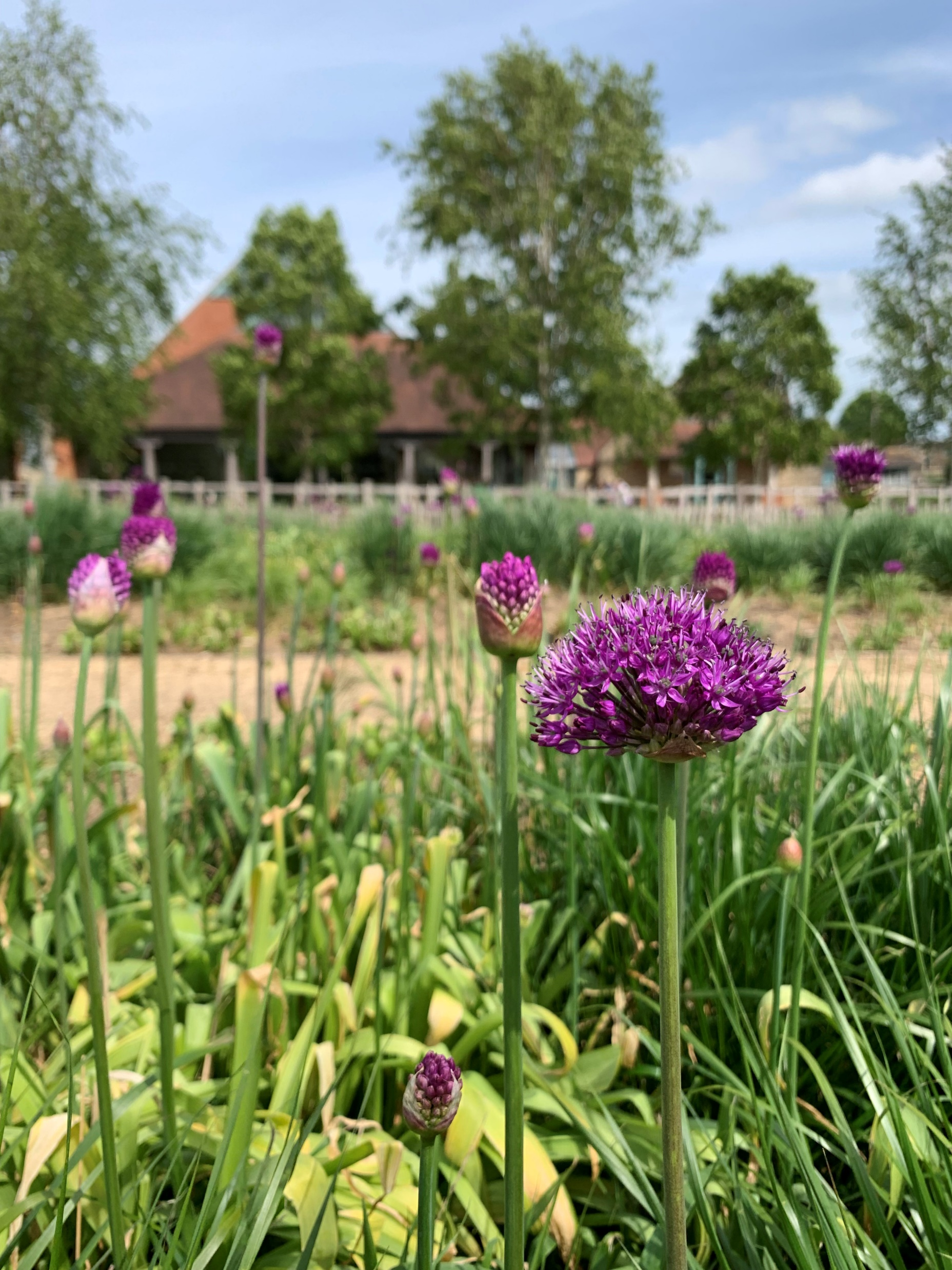

Garden Tips
Make sure you get your annual seeds sown by the end of the month and stay on top of the weeding in your borders. Controlling weeds now whilst they are small and weak will pay dividends later in the summer.
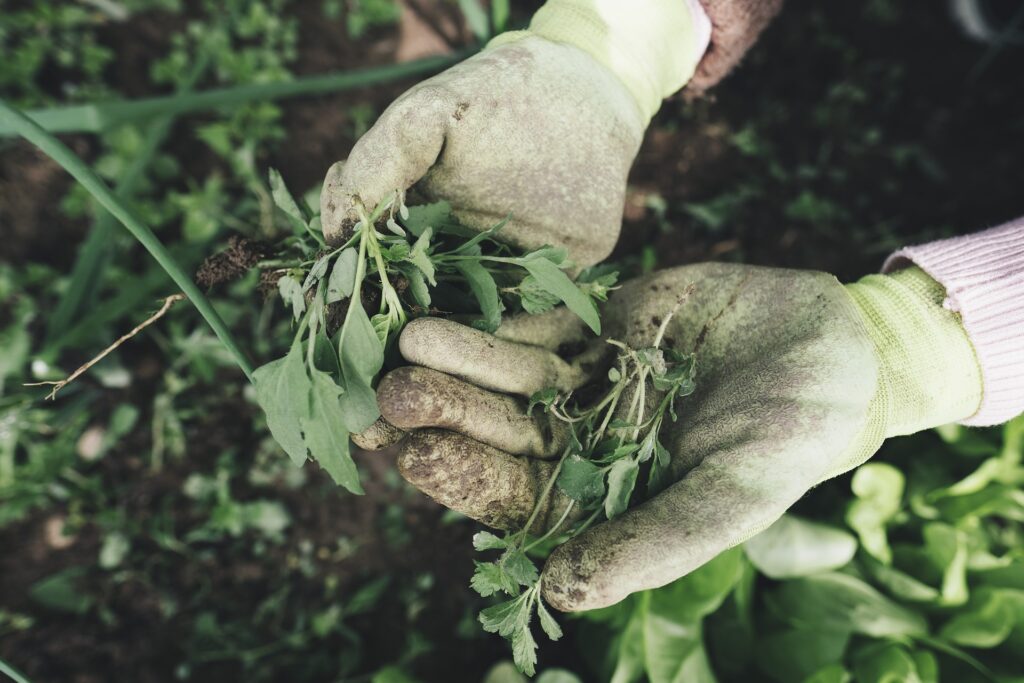
In the News
Renowned garden photographer Clive Nichols will be launching his new book later this year. We are delighted that there are 3 Aston borders featured in the book; The Bank, The Annual Border and The Dahlia Border. We will keep you informed as to the launch date of Clive’s book.
Volunteering
Our gardening team is very small.
Stephen is head gardener, when he is not making pottery, making cakes, serving in the café or helping in the shop.
Nicky, a volunteer, does one day per week. We have now also been joined by Richard and Kian, who you will see out and about in the gardens.
More help would be very welcome. Would you like to volunteer too, either on a regular basis or for one of our big plant-outs?
You will be reward by being surrounded with wonderful people and plants, along with a cuppa and some fabulous cake and lunch if you do a full day!
